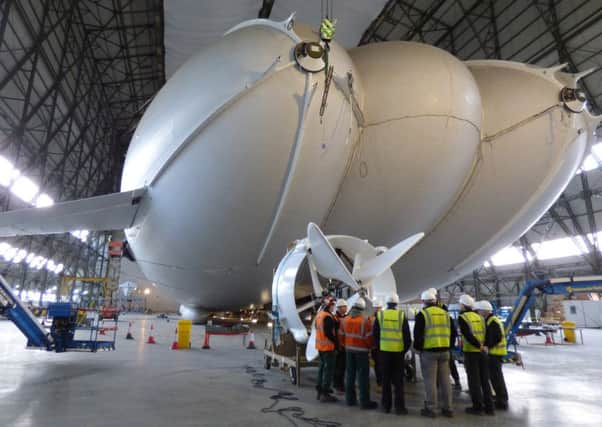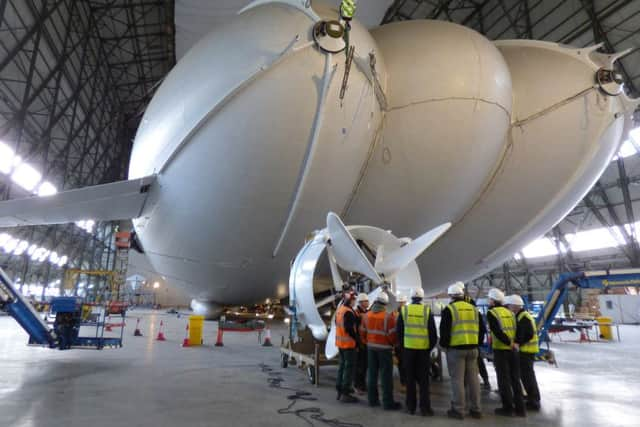GALLERY: Sneak preview of Airlander in Shed ahead of first flight


These remarkable photos taken inside its Cardington Shed give a glimpse of how the airship will look ahead of its first test flight.
The first of the major attachments to the hull was the lower port fin. The massive 11m x 9m fin was lifted onto the hull by a huge crane and then attached by Hybrid Air Vehicles’ expert team.
Advertisement
Hide AdAdvertisement
Hide AdNext, one of the four 350hp, 4-litre V8 direct injection, turbocharged diesel engines was hoisted up onto the stern of the hull; it was attached to five carbon composite battens that had been secured in readiness.


A HAV spokesman said: “Even though this was done after home time many of our proud members of staff stayed to watch as history was made.
“There was no chance for a rest after the huge engine was fitted as the payload module was delivered and manoeuvred under the enormous hull.”
The payload module is the area behind the cockpit where the passengers or cargo will go and is yet another light but durable carbon composite structure.
Advertisement
Hide AdAdvertisement
Hide AdFollowing this the upper starboard fin was affixed using a crane and two cherry pickers.


Earlier in the week, the first LERX (Leading-edge root extension) was affixed to the port fin followed by the other upper fin, as well as the second pylon; the pylon is on the side of the hull at the front of the Airlander and will house one of the vectored engines, which will rotate during take-off and landing.
By the end of this month the final attachments will have been made and the payload module completed, in readiness for First Flight.